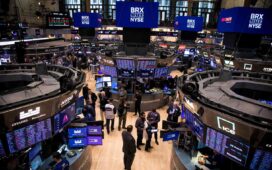DBS Bank’s Chief Investment Officer Hou Wey Fook is bullish on gold because there is no shortage of both short-term and long-term tailwinds for this asset class. He believes gold presents a favourable risk-reward scenario and serves an important function as a portfolio risk diversifier.
DBS Bank maintains a neutral stance on India. An engineer and CFA charter holder with over 30 years of fund management experience, Fook recommends exposure to India via mid/small cap mutual funds which can capture the opportunities brought about by the world’s fifth largest economy in the world by nominal GDP.
We are bullish on gold because there is no shortage of both short- and long-term tailwinds for the asset class. In the immediate term, the rising probability of Fed rate cuts and strong safe haven demand have collectively driven bullion to a string of new record highs.
In the longer term, we foresee the central bank buying to remain robust as the desire for assets that are not at risk of sanctions grows amid an increasingly multi-polar world. We see this trend mirrored in the wider investor community as well, with individuals and family offices buying more gold bar and coin as a black swan hedge. Overall, we believe gold presents a favourable risk-reward and serves an important function as a portfolio risk diversifier.
Story continues below Advertisement
Do you see the possibility of more than three rate cuts by US Federal Reserve in 2024?
Barring an unexpected resurgence of inflation, our base case remains a scenario of three rate cuts this year amid a soft landing in the US economy. This is aligned with the outcome of the March Federal Open Market Committee meeting; inflation may have been a tad sticky in recent months, but the Fed’s view – policy rates will be 75 bps lower before the year is over – remains in place.
Also read: India stocks @ Rs 400 trillion: What the ‘Buffett indicator’ tell us about the future course
Story continues below Advertisement
While the 2024 year-end median Fed Funds Target remained at 4.6 percent, unchanged from the December 2023 meeting, the distribution of votes has converged towards a clearer consensus; 9 of the FOMC participants indicated 4.50-4.75 percent to be the appropriate target range for the Fed Funds rate, up from 6 participants during the December meeting, reinforcing our view on three rate cuts between March and December this year.
Which are the top three themes to look at on global front?
Quality Big Tech stays at the forefront
We maintain our conviction on technology-related stocks. Build ‘I.D.E.A.’ – an acronym we coined to represent the innovators, disrupters, enablers, and adaptors – into your portfolios; these are innovative companies that leverage technology to deliver strong earnings growth as the world continues its transformation into a digital economy.
The run-up in tech began some 10 years ago with the proliferation of the smart phone, followed by cloud computing and now Artificial Intelligence. Our call has panned out well, with US Tech outperforming all other sectors by a huge margin over the past decade.
Also read: NSE announces May 20 as trading holiday due to Lok Sabha election in Mumbai
Broadening rally to Energy and Healthcare
The trajectory of oil prices has defied initial expectations this year, surging despite softening economic conditions and restrictive monetary policy in the West. OPEC+ production cuts, conflict-driven supply disruptions, and higher-than-expected demand are collectively supporting higher oil prices.
Another beneficiary of the broadening market rally is Healthcare, a defensive growth sector that rides on the secular growth trend of the world ageing, has gone up by +8.4 percent (as of March 2024) since the lows of October 2022.
Diversify with Alternative assets
As the shift towards a multi-polar world order persists, exposure to Alternatives will enhance risk-adjusted portfolio returns. Gold continues to offer favourable risk-reward given intact long-term tailwinds of continued central bank buying, an environment of lower rates, and US dollar weakness.
Private markets expand the investable opportunity set and enhancing risk-adjusted returns in a portfolio. Investors may access private market opportunities through a well-paced, diversified programme across asset classes, strategies, and vintages.
Have you spotted any investment opportunities in India as most global experts are positive on India?
We maintain our Neutral stance on India. India’s economy has demonstrated remarkable resilience thus far and is poised to sustain its strong performance this year. Earnings projections continue to exceed expectations, with anticipated growth of 14 percent over the next 12 months, a figure we deem realistic given India’s robust GDP expansion of over 8 percent.
To navigate the elevated valuations while capitalising on attractive growth prospects, we recommend exposure to India via mid/small cap mutual funds which can capture the opportunities brought about by the world’s fifth largest economy in the world by nominal GDP, and yet with significant room to grow as it lags in per capita income.
These funds are particularly appealing to domestic investors given ample liquidity in the economy and offer better returns on a risk-adjusted basis. Recent regulatory cautions regarding such funds are expected to prompt enhanced risk management practices.
Key sectors contributing to the growth in the mid/small cap space include technology, consumer goods, and services. India’s financial sector, including banks and non-banking financial institutions, play a crucial role in supporting economic activities. We see bright spots in well-established financial institutions as well as Fintech companies innovating in the sector.
India has a robust IT sector that includes software services, IT consulting, and business process outsourcing (BPO). In this digital transformation era, companies involved in engineering and research and development (ER&D), as well as those benefitting from AI and digital tech spend should perform well.
A rising middle class and increasing urbanisation trends in India contribute to the growth of the consumer goods and services sector. This includes companies involved in FMCG, retail, and e-Commerce. Recent trends in widening income inequality present opportunities for premiumisation in sectors such as autos, beverages, food, apparel, tourism, and luxury retail.
Do you expect major FII inflow into India given the India’s inclusion in Global EM bond index?
The basic assumption is that the increased weights in major bond indices would drive more inflow as funds adjust portfolio weights to meet their benchmarks. We note however that such inclusion is a progressive one, where weights are increased only slowly between 2024 and 2025 to 10 percent, and to the tune of only around $20-30 billion judging by fund sizes on average.
India’s economy is also still showing healthy levels of growth and inflation, which makes onshore real yields less attractive; therefore, managers may have discretion not to move towards benchmark weights so immediately. As such, there should be a modest expectation for inflows into India local currency bonds based on such structural forces of index inclusion, but not in a significant way that changes the structure of local currency bond markets as a whole.
Disclaimer: The views and investment tips expressed by investment experts on Moneycontrol.com are their own and not those of the website or its management. Moneycontrol.com advises users to check with certified experts before taking any investment decisions.





